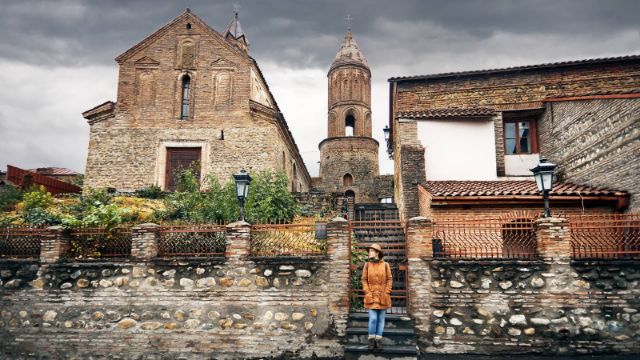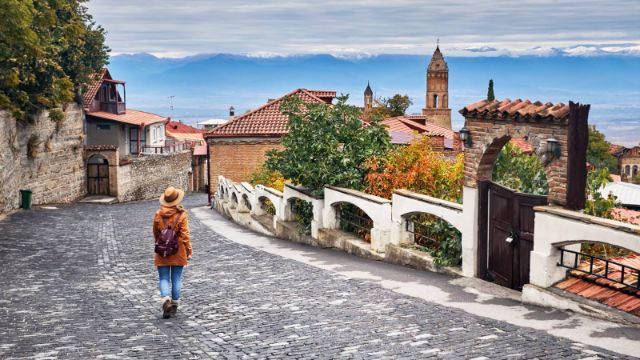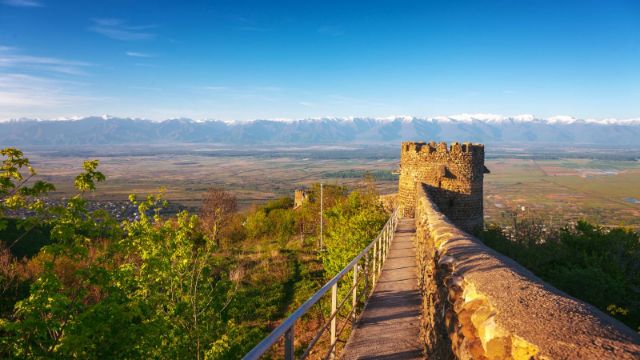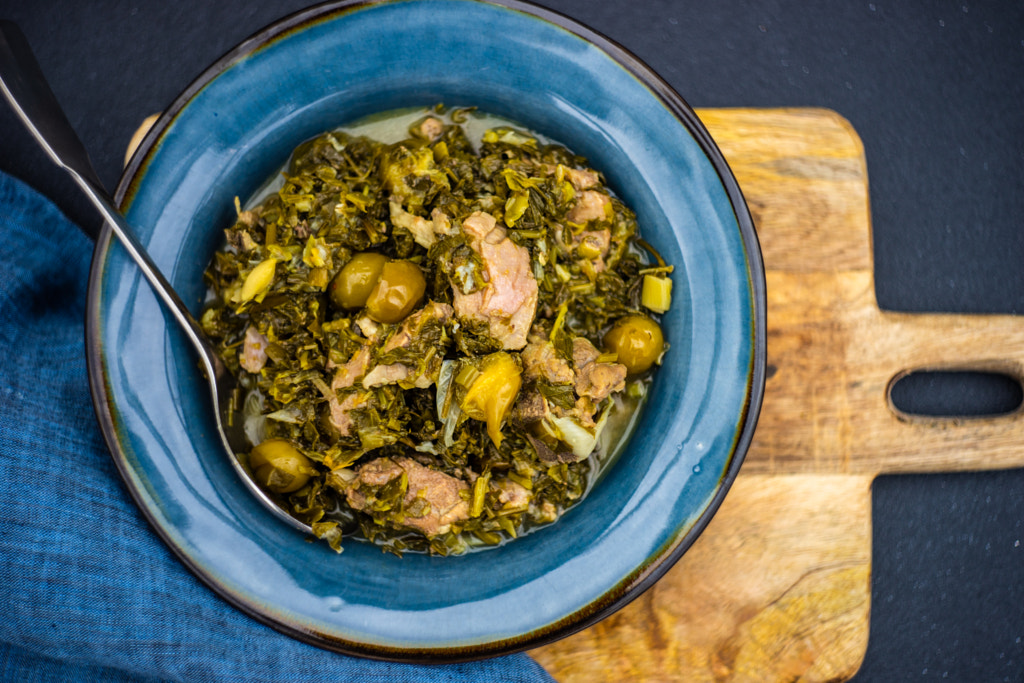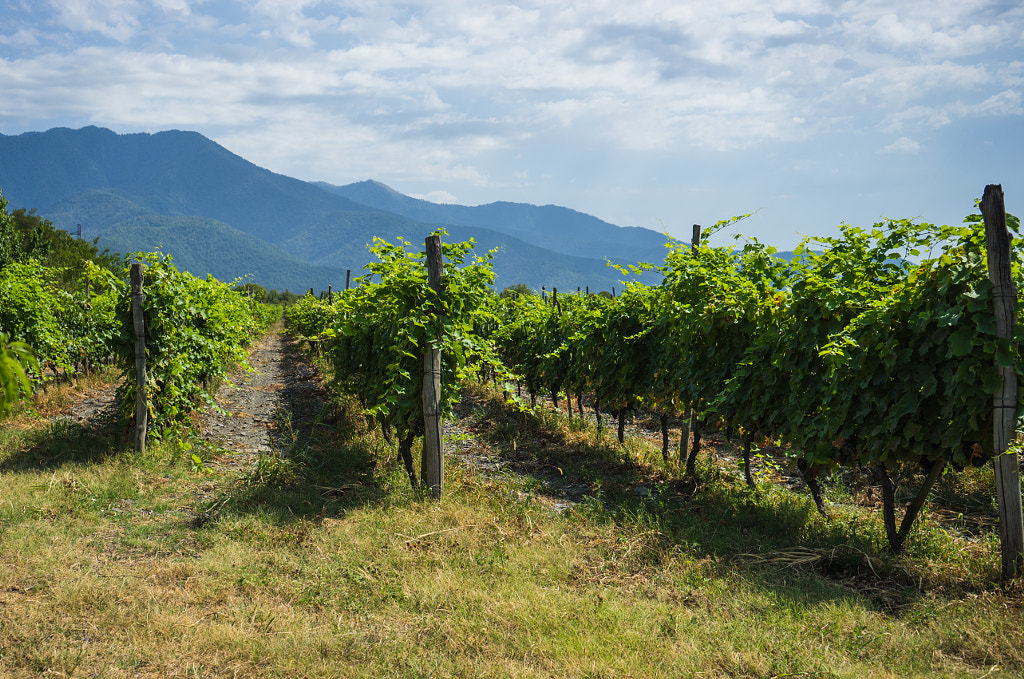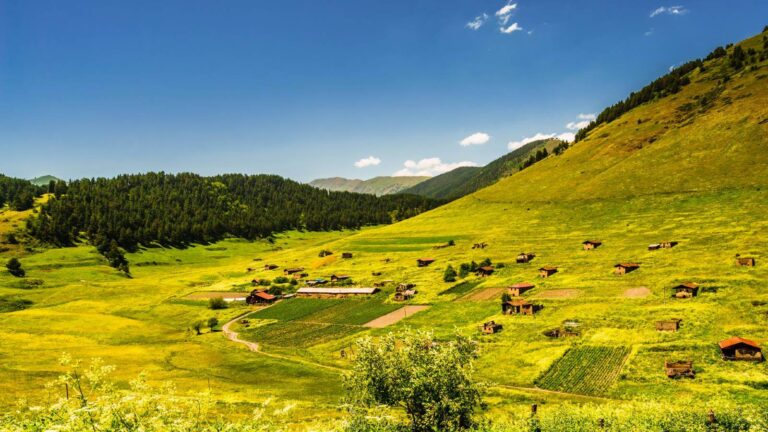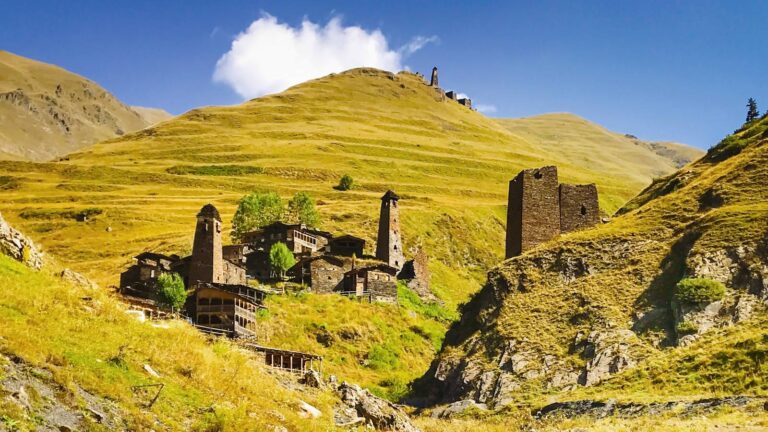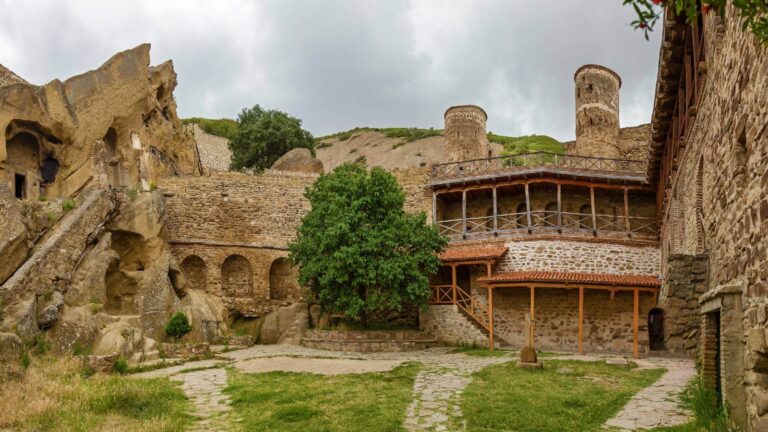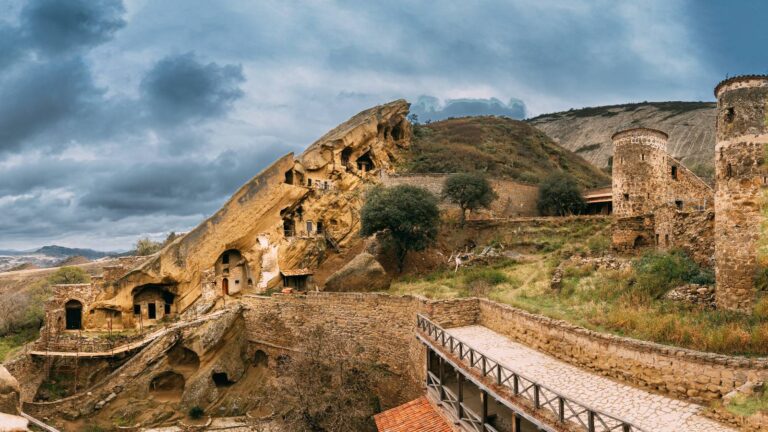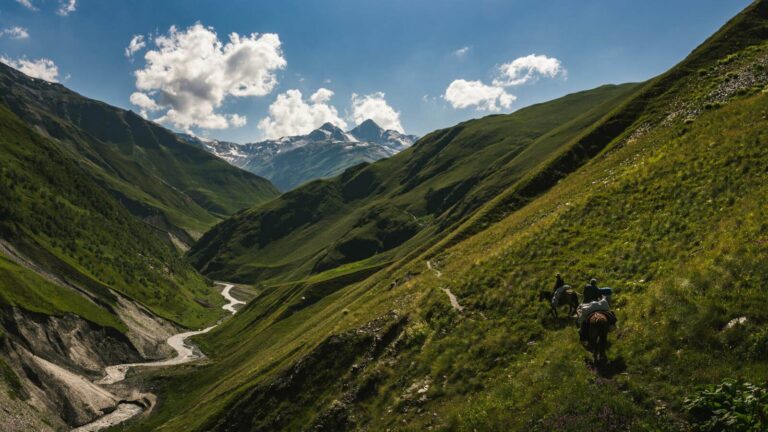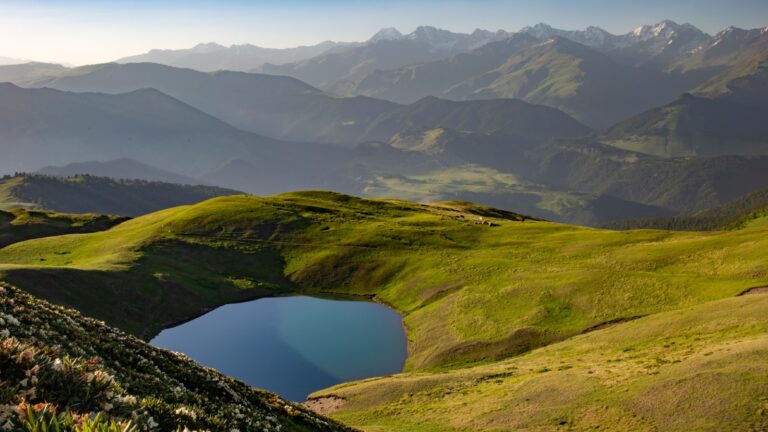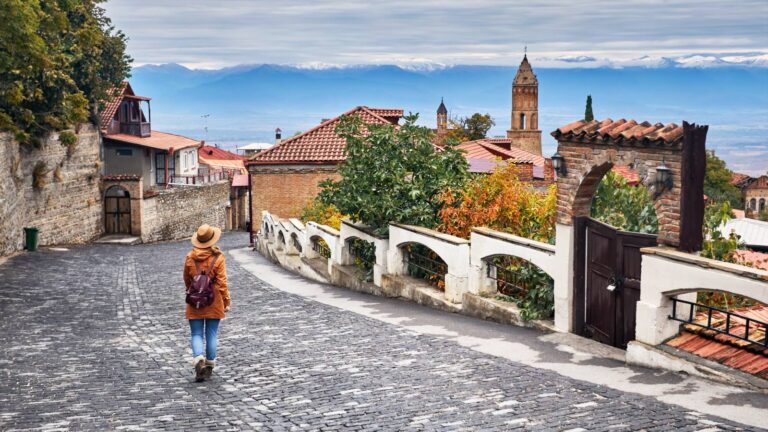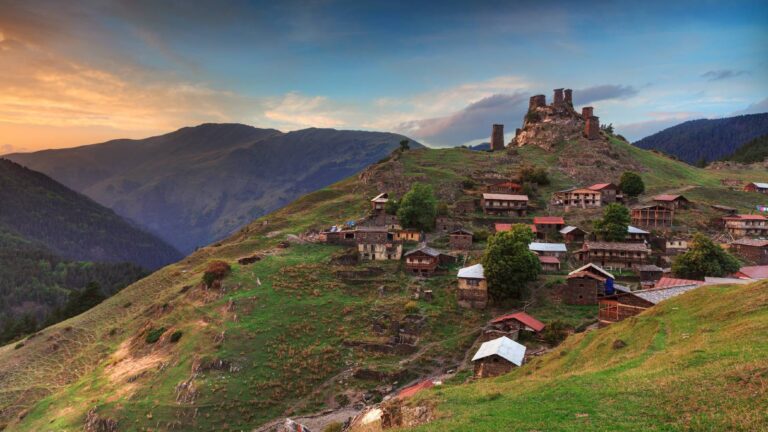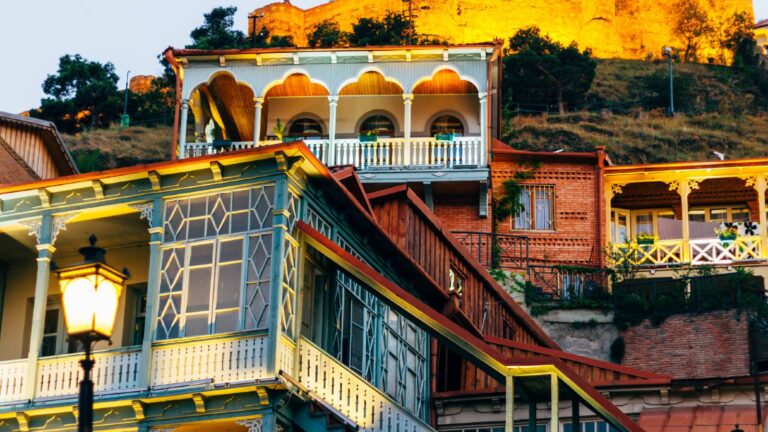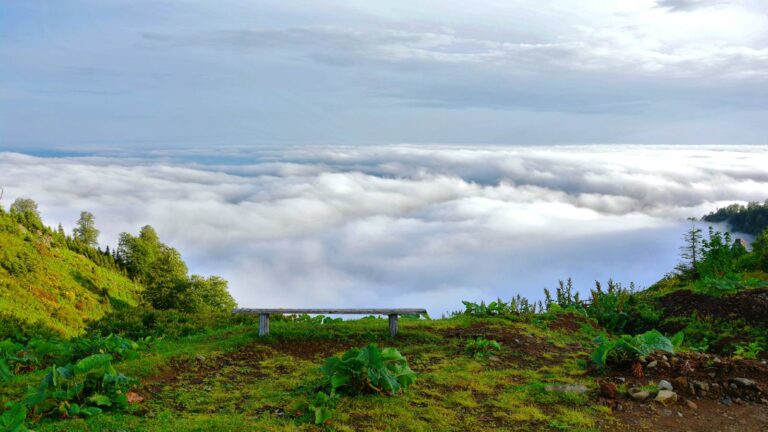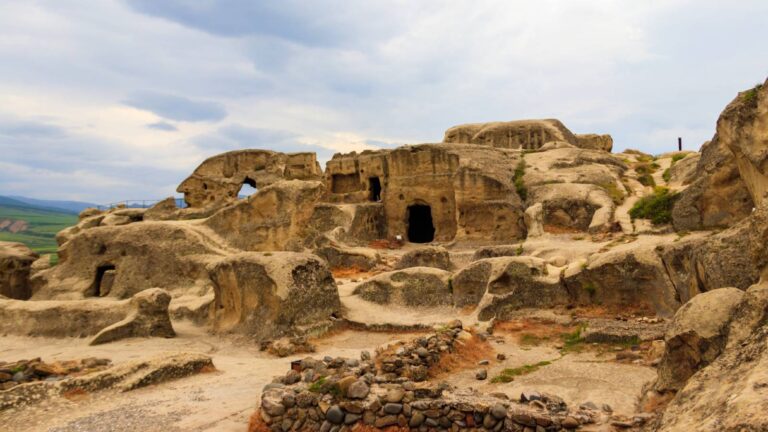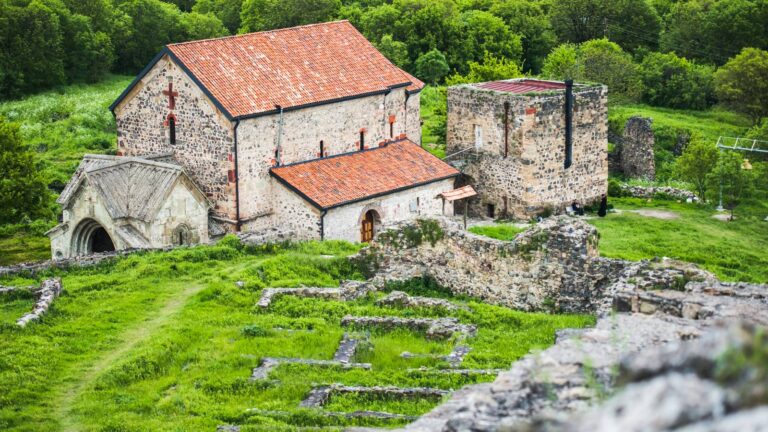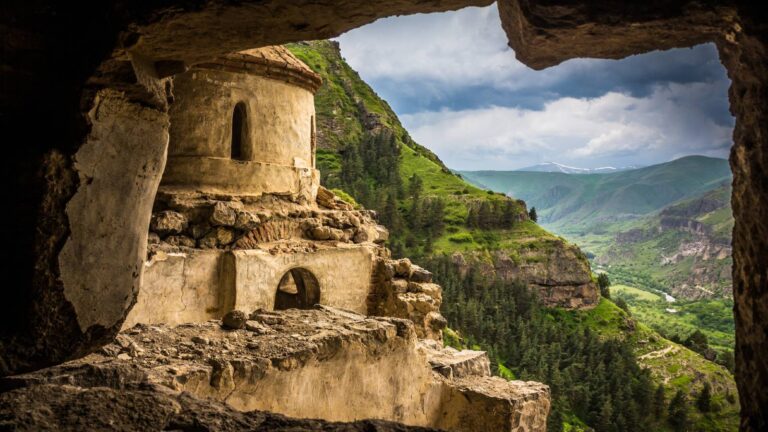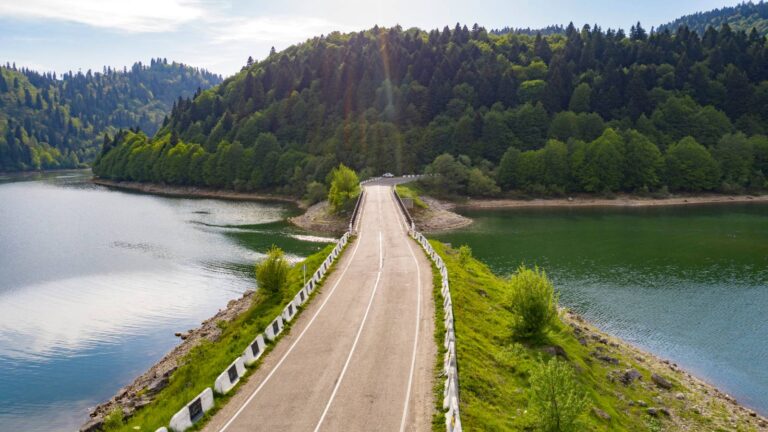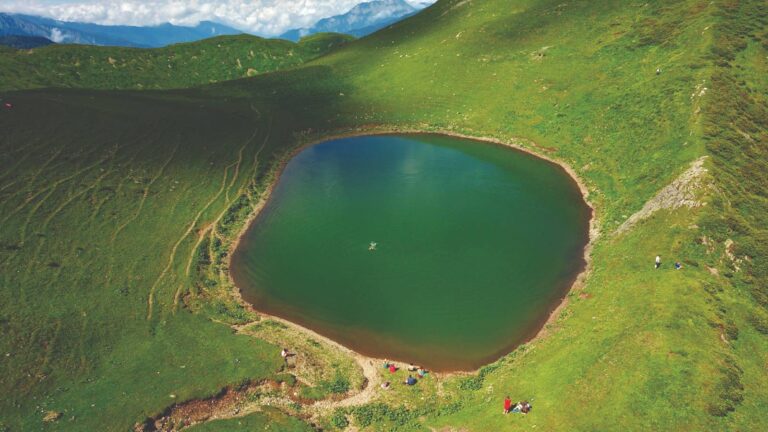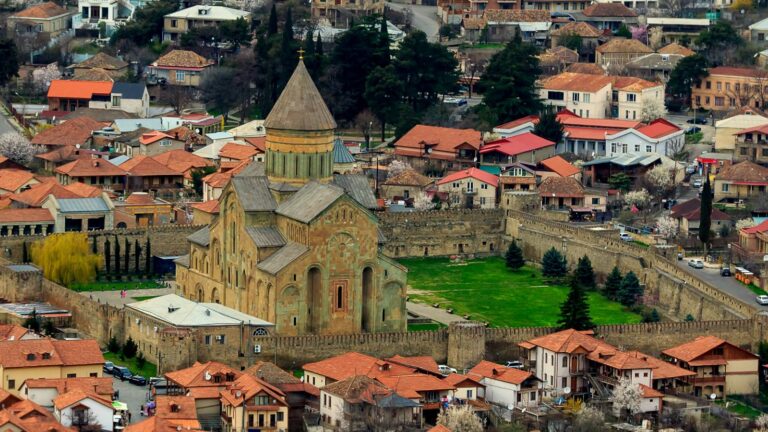Kakheti, with its centuries-old culture, is rich in monuments of different time periods. Here you will find ancient settlements, unique medieval temples (which were also important cultural and educational centers), castles, Tush towers, slate houses, etc. You can view beautiful chateaus and go on wine tours.
The region is also diverse in nature. There are waterfalls and rolling lakes hidden in Kakheti’s greenery. The landscapes are completely different from other regions of Georgia. Kakheti is exotic in its isolated, colorful desert and mud volcanoes of Vashlovani reserve.
Key Landmarks
- Black Rocks Lake
- Rocho Waterfall
- Ninoskhevi Waterfall
- Eagle Gorge
- Gareja Desert
- Lake Ortskali
- Lake Oreti
- Khadori Waterfall
- Kilakupra mud volcanoes
- Kakliskure
- Tusheti villages (Diklo, Shenako, Girevi, Farsma, Chesho)
- Davitgareja
- Kvetera
- Ikalto Monastery
- Alaverdi
- Gremi Monastery
- Nekresi Monastery
- Khornabuji Fortress
- Elijah Monastery
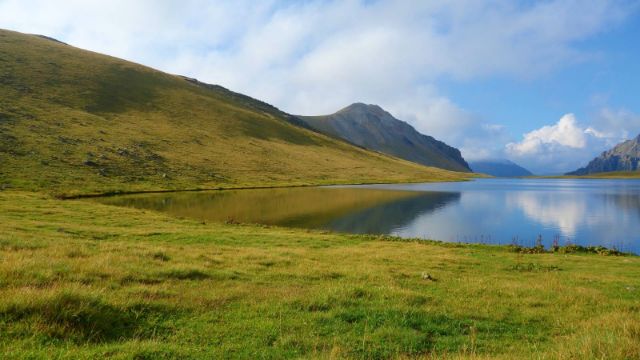
Black Rock Lake 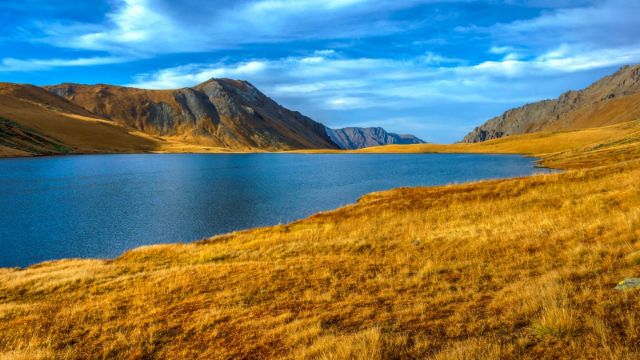
Black Rock Lake
Distinguishing Kakheti as a separate territorial unit is attributed to Kakhos, one of the sons of the Georgian ethnarch, Kartlos. In ancient times, Kakheti covered a much smaller area, namely Ertso-Tianeti and Pkhovi, the center of which was Cheleti (Zhaleti). After Kartlos’ wife passed on the territory of Kartli to her sons, Kakho received the above-mentioned borders.
From the 4th century, the center of Kakheti was Ujarma, built by King Asfarug. The borders of Kakheti were expanded in the East. By the VIII century, it covered an important part of Kukheti and Hereti.
In the 11th century, the city of Telavi became the center of the region. In the XV century, after the disintegration of Georgia, the Kingdom of Kakheti was formed. From that time, the center of Kakheti became Gremi. In the XVI-XVII centuries, Kakheti was separated from the North-Eastern part, which today bears the name of Saingilo and is administratively included in Azerbaijan. In the second half of the 17th century, the center of Kakheti moved to Telavi again. The Kingdom of Kakheti existed until the XIX century.
Folklore
Kakhetian folklore is a significant part of Georgian culture. Khakhetian folk songs such as Mravalzhamieri, Tsintskaro, Urmuli, Makruli and others are well-known. “Chakrulo” is an important sample of Georgian folklore that was sent into space. Tush folklore is also a part of the diversity of the Kakheti region.
Celebrations
Many public and religious holidays are celebrated in Kakheti, such as Alaverdoba, Iliaoba, Gremkalakoba, Erekleoba, Pirosmanoba and others.
Cuisine
Kakheti is also known for its exceptional cuisine. Meat dishes are especially popular here. Traditional dishes are mtsvadi (barbecue) fried on tsalami, khashlama, chakafuli, chikhirtma and many more. Tush cuisine is famous for Khinkali, Mtsvadi, Choban (Shepherd Kaurma), Khmiadi (ritual triangular bread), Gordila, Kumeli, Kotori, Khavitsi, Mosmula and others.
Tush Gudi cheese is famously made in a sheepskin bag. In between, the Alazani river and its wide valley cut from North to South, carving out dozens of different microclimates provide the perfect conditions for cultivating grapes. Georgia has more than 400 endemic varieties in total, many of which grow (or once grew) in fertile Kakheti. Today, this remains Georgia’s premier wine region, responsible for around 70% of the country’s harvest.
Kakheti is located in Eastern Georgia. It is bordered by Kartli from the West, the Russian Federation (Dagestan) from the North (separated by the Caucasus Mountains), and Azerbaijan from the South. Kakheti region includes the inner and lower reaches of the Iori River and the Alazani River basin.
Kakheti consists of 8 administrative units, namely the municipalities of Akhmeta, Gurjaani, Dedoplistskaro, Telavi, Lagodekhi, Sagarejo, Sighnaghi, and Kvareli. The administrative center of the region is the city of Telavi.
Separate parts of Kakheti are called Garekakheti (middle year of the river Iori), Kiziki (between the lower reaches of the Ivri and Alazani rivers), Shida Kakheti (right bank of the Alazani river), and Gaghmakhari (left bank of the Alazani river).
Kakheti Caucasus beautifully run down the steep slopes of the Alazani Plain. Kakheti is connected to Tusheti by the Abano Pass on the Caucasus ridge. The territory of the region includes Vashlovani National Park, Tusheti National Park, Ilto Reserve, Korugi Reserve, Lagodekhi Reserve, Iori Reserve, and Chachuni Reserve. Nature is very diverse in this area, with semi-deserts, evergreen forests, plains, meadows, and even subalpine vegetation.
Alazani Valley has a moderate subtropical climate. The average temperature is 0 in the winter and 23-25 in the summer. Outside Kakheti (Iori plateau, mountains in front of Gombori and Yalno ridges) has a dry subtropical climate.
The average temperature in winter is 0 to -2.3 and 23-25 in the summer. The weather is relatively cold on the Tsivgombori ridge. The lowest point of the region is Eldar plain (90-150 m above sea level), and the highest is Tebulo mountain (4493 m).
Kakheti is one of the most outstanding regions of Georgia with its economic potential. The diversity of natural conditions has defined the agricultural profile of the region, and the region’s specialization in winemaking is not accidental. The main share in the region’s well developed food industry falls on the wine production and international tourism.


